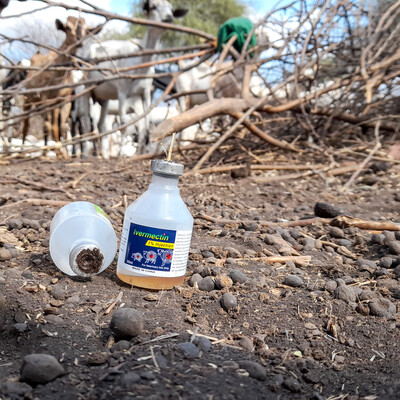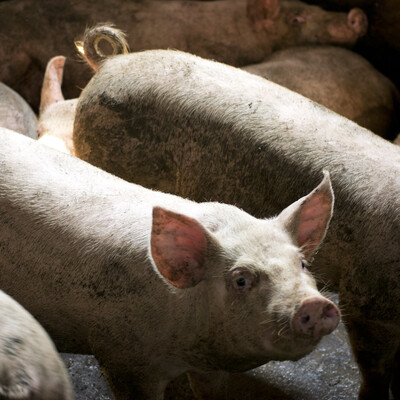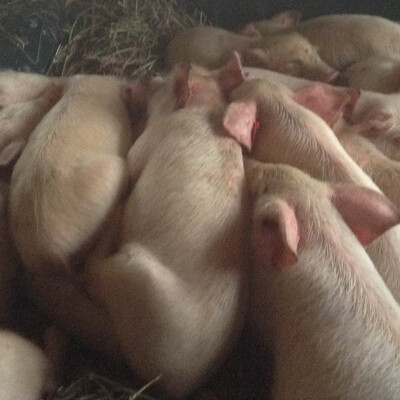
James Magondu
The Institute for International Livestock Research (ILRI) is sad to report the death the week before last of James Magondu, a long-term staff member of ILRI and its predecessor, the International Laboratory for Research on Animal Diseases (ILRAD), who retired from ILRI in 2012.
As Julius Osaso, diagnostic platform manager at the Biosciences eastern and central Africa-ILRI Hub, remembers, back in 1982 James was employed at ILRAD by Sam Black, an Irish immunologist who headed ILRAD’s Lab 4. James later worked closely with another ILRAD immunologist, Belgian Jan Naessens.
'James' professional background was in computer engineering, expertise he augmented with training at the Becton-Dickinson Corporation laboratories in Belgium, following which he returned to Kenya to manage ILRAD's flow cytometery unit with a flourescence-activated cell sorter (FACS) instrument called FACStar.'Flow cytometry is widely used in research on basic cellular and molecular mechanisms, which was of particular pertinence to ILRAD in the 1980s, as it became a world leader on bovine immunology studies. Flow cytometry enables investigators to identify, purify and characterize cells from mixed cell populations by measuring and then analyzing multiple physical characteristics of the cells as they flow in a fluid stream through a beam of light.
'This unit that James headed tremendously increased the capacity of ILRAD researchers to advance understanding of livestock infections with tropical parasites and to search for possible parasite targets for next-generation vaccines against the diseases the parasites cause, particularly in ILRAD’s case, the lethal disease of cattle in Africa called East Coast fever.
'James was one of the pioneer Kenyan internationally recruited technical staff employed by ILRAD. His FACS section remains a cornerstone of ILRAD/ILRI’s reknowned cellular immunology and vaccinology work.
'He was a jovial man who socialized with all staff, regularly playing table tennis, draughts and darts over his lunch breaks. He was a founding member of Utafili Sacco Limited and is the longest serving chairman to date (1987–1999). He built the foundation on which Utafiti Sacco has grown today.'
And here is how former ILRAD laboratory manager Chris Hinson remembers how James came to ILRAD and what he accomplished there.
‘James was hired after [then ILRAD research director] Jack Doyle became convinced of the capability of fluorescence-activated cell sorting. ILRAD scientist Sam Black and others had also become aware of the possibilities of this technology, but were also aware of the large amount of money needed to buy a FACS machine. In those days, these units employed huge, old-style lasers that depended critically on a stable power supply.
‘Jack got hold of me one afternoon and explained that someone needed to visit the FACS facility in the University of Cologne to assess the infrastructure and staffing requirements and to come back and advise ILRAD on whether or not we should try to buy and install one.‘Jack said, “You’re going on leave in four weeks. You need to tag a four-day trip to Cologne onto your holiday. Go and make the bookings.”
‘Long story short, we looked at what was needed, bought the FACS unit, installed all the gear and as this was happening advertised for a computer technician to run the machine. Part of the critical content of my report back after my trip had been that this was in no way a machine that could be used as a piece of bench equipment by scientists and technicians. FACS needed a dedicated technical operator just as ILRAD's electron microscope did. So we set up the FACS and its own big UPS units and the computers needed to do all the data processing for the analysis of the cell streams coming out of the sorter.'In the meantime, we drafted a job description and began our search for a suitable research associate to run the thing.
‘The first applicants we interviewed were lack-lustre and showed little interest in our explanations of what the machine could do and how ILRAD planned to use it. Then James, who was then a computer service technician, entered the interview room and sat down. Jack and I dutifully repeated our lengthy explanations as to the potential of the machine and the applications that we envisaged for it at ILRAD. When we finished, James simply said ‘Ooooooh’ and looked at us slightly sideways. This was followed by a long silence. Assuming that our explanations had gone over James’ head, we members of the interview panel exchanged looks and one of us began to change the subject to tactfully conclude the interview.
‘That’s when James held up his finger and made a remark. As I remember it, his remark was something about the gain control on the photomultiplier tubes. (For the uninitiated, these tubes use cathodes and anodes set in a cold vacuum tube to generate photocurrent from the light generated by the flow cytometry. The photon, generated by the excitation of the fluorophore in the sample, collides with a photocathode when entering the photomultiplier tube.) Somebody then made the (happy) mistake of asking James why that gain control would be significant. James proceeded to clearly and precisely explain this to us.
‘We of course hired James immediately! And we discovered soon after that James had a habit of looking sideways whenever he was thinking hard or internalizing information.
‘James’s cooperation and support of our research in Labs 4, 5 and 6 in those early years were fundamental to ILRAD’s growing basic research in immunology and vaccine development. As the machines improved over the years and the lasers changed and the analysis became more powerful, James always stayed ahead of the game.’
Years later, under ILRI (ILRAD and ILCA amalgamated to form ILRI in 1995), James was made head of electronics (2001), coordinator of engineering and facilities (2004) and engineering manager (2009), a position he held until his retirement from ILRI in 2012.
ILRI staff send their condolences to James' family, colleagues and friends.


















